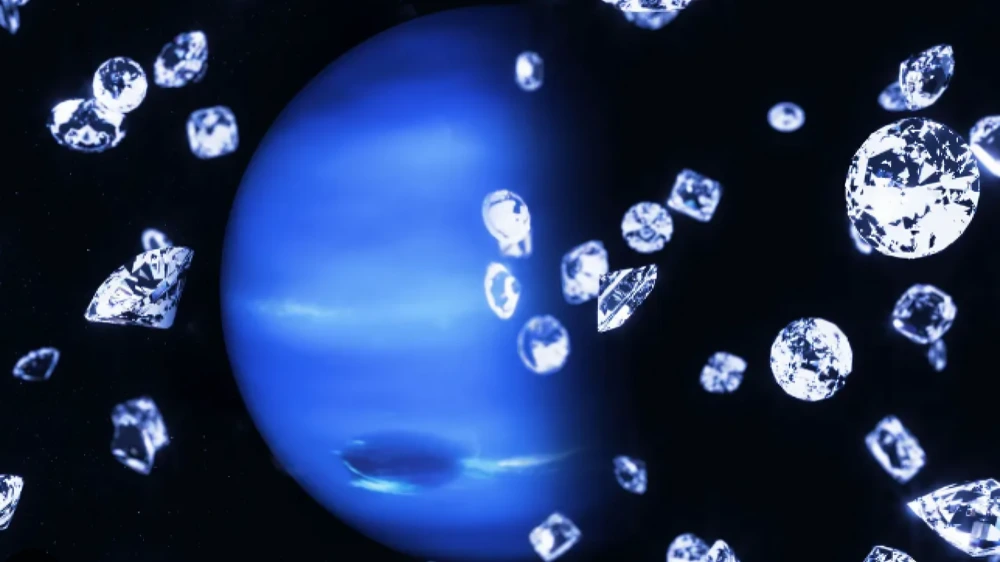Diamond Rain on Ice Giants Uranus and Neptune
Scientists at the Department of Energy’s SLAC National Accelerator Laboratory have discovered new details regarding the formation of diamonds within our solar system’s frozen giants, Uranus and Neptune, in a ground-breaking study that was published in Nature Astronomy. According to this research, “diamond rain” may occur at lower pressures and temperatures than previously thought, challenging preconceived notions.
The study team, under the direction of Mungo Frost, a scientist at SLAC, carried out pioneering tests at the European X-ray free-electron laser (XFEL) facility located in Germany. Through prolonged exposure to extreme conditions akin to those seen inside frozen planets, the researchers were able to detect the production of diamonds on a plastic film composed of polystyrene, a carbon source. They used a “diamond anvil cell” to apply constant pressure, and high-energy X-rays heated the material to a temperature higher than 2200 degrees Celsius.
Diamond Rain
The study’s conclusions suggest that diamond creation may begin in shallower regions of Uranus and Neptune, which may have an impact on those planets’ magnetic fields. Scientists have been perplexed for years by the uneven magnetic fields that these ice giants display, in contrast to Earth. Frost suggests that as diamonds precipitate through the layers of the planets, gas and ice may be drawn along with them. This might stir conductive ice and create currents that could power the magnetic fields.

The research also raises the possibility that diamond rain might potentially fall on smaller gas planets, or “mini-Neptunes,” which are common outside of our solar system, rather than just Uranus and Neptune. With its broad implications, this research sheds light on potential processes that could take place on exoplanets.
The research team intends to carry out additional experiments in the future to improve their comprehension of how diamond rain affects the properties of different planetary bodies. The study’s wider significance was highlighted by Siegfried Glenzer, the High Energy Density Director at SLAC, who said, “This groundbreaking discovery not only deepens our knowledge of our local icy planets but also holds implications for understanding similar processes in exoplanets beyond our solar system.”
Studies such as these offer important insights into the intricate dynamics of celestial entities and throw light on occurrences that were previously unknown as scientists work to solve the mysteries of our cosmos.
You may also Read our Finance, World News, Local News, Health, Food, and Education articles.

